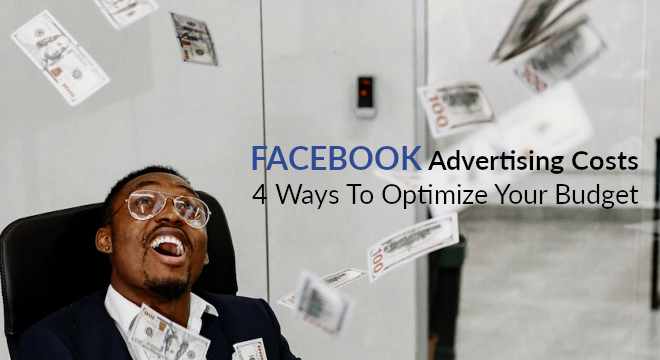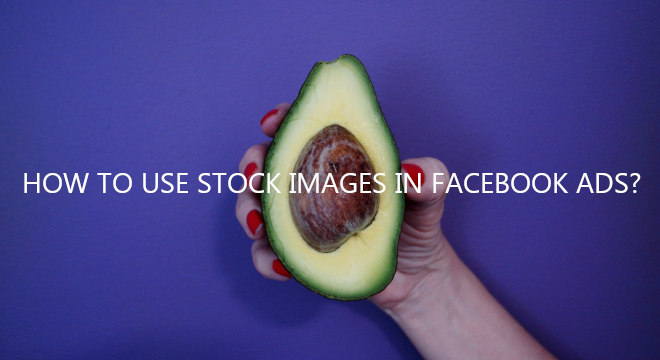Facebook advertising works a bit differently than other marketing channels, which is why many marketers get confused when choosing the right way to approach it.
Even if you have spent years in the industry, finding ways to optimize your Facebook ad budget doesn’t really get that much easier with experience.
It might seem that everything is going well in one minute, but then you realize shortly afterward that your Facebook ad cost has grown significantly. So…
How Can You Reduce Your Facebook Advertising Spend?
Well, the best way is through optimizing your budget.
In this article, we will go over the factors that affect Facebook advertising costs and show you some of the best practices for budget optimization that you can apply in your own business.
Factors That Affect Facebook Advertising Costs
Before we get into the actual budget optimization techniques, you first have to understand which factors affect your Facebook ad costs the most.
This is one of the things that each marketer has to understand to plan the budget in the future properly.
Industry
Facebook pays a lot of attention to your business’s specific niche, and it’s one of the main factors that will affect your ad costs.
For instance, if you are promoting something in the finance industry, your ad costs will be a lot higher than those promoting sneakers.
Time of Year
The next thing you should consider when running your ad is the time of year.
While the costs in the first three quarters may not seem that different, Q4 is a whole different story. This is mainly because holiday seasons are right around the corner, and there is a considerable increase in businesses competing for a spot, which ultimately leads to much higher costs.
Target Audience
Whether you are trying to reach the same target audience as your competitors, the audience you target can significantly influence the cost of your Facebook ad.
What’s more, your niche competitors won’t be the only problem – you will also compete with companies that are targeting the same demographics as you.
Relevance Score
The relevance score is essentially a metric that provides you with a 1-10 rating on how well the audience is responding to your ad campaign.
If your score is somewhere on the higher side, the audience finds your ads attractive.
However, a lower relevance score automatically triggers Facebook to charge you a premium for the ad. This results in a much higher cost, and it’s why you should always aim to create a quality ad that brings value to potential customers.
Four Effective Ways To Optimize Your Facebook Advertising Budget
Time to move on to our main question – how to optimize your budget, so you spend less on Facebook ads? No matter how well (or not) your Facebook ads are performing, you should always try to work out ways to spend less on running them.
Here are some of the best practices you can incorporate to optimize your budget and save money via lowering ad costs.
1. Pick The Right Objective
Once you start working on your new ad campaign, Facebook will ask you to choose the exact objective that you want to achieve through the campaign.
Some marketers overlook this step, thinking it’s irrelevant, but that can be a costly mistake. Don’t rush this step – think about your objective carefully and take as much time as you need. Are you trying to raise your brand awareness? Or, do you want to attract customers to buy your product or service?
There aren’t any right or wrong objectives – you just have to pick one that is more suitable to your overall campaign goal.
Here are the three main digital marketing funnel stages that you can choose:
- Awareness – if you are a relatively new brand that doesn’t have a huge audience yet or simply trying to raise more awareness. The main goal here is to capture the user’s interest, and it’s why you should choose either ‘Brand Awareness’ or ‘Reach’ objectives. There is also an ‘App Install’ objective, but if people aren’t familiar with your brand, chances are very slim that they will download your app.
- Consideration – This stage is best if you already have an audience that has heard about your business but is in the process of comparing your prices and products against other companies in the same niche. We recommend that you choose ‘Traffic’ or ‘Messages’ as your objective since this can help you additionally inform your target audience and lead them to your website.
- Conversion – Your target audience is interested in what you are offering, and they are one step away from becoming a conversion. This stage probably includes the least amount of people, but they are all very close to becoming actual customers. Choosing Conversion as your main campaign objective is usually the best way to optimize your ad budget.
2. Narrow Down Your Target Audience
Naturally, having a broader audience is bound to result in more comprehensive reach metrics. However, the conversions rates will most likely be extremely low.
This is because even though you are reaching a large number of people with your ad, it won’t do you much good if they have zero interest in what you are offering.
Plus, Facebook is known for having some of the best targeting possibilities in the industry, so why not take advantage of it?
Narrowing down your target audience can do wonders for your conversion rates since you will be targeting people that are actually interested in what you are offering. This way, you will have a much higher chance of generating more revenue, ultimately spending less money on inefficient ad campaigns.
Here is how you can manually set up your target audience on Facebook:
- Core Audience – If your business is still relatively new, you can use this option to create your ideal customer persona.
- Custom Audience – Target people who already know about your business and have visited your website in the past. It essentially works as a retargeting tool.
- Lookalike Audience – As the name suggests, this makes Facebook target audiences that share many similarities with your past customers. It is also one of the best ways to expand your audience type.
3. Lower The Ad Frequency
Ad frequency refers to the average number of times people see your ad in their feeds. The optimal ad frequency is three or lower. If people see your ad more than three times, there is a high chance that they will experience what marketers call ‘ad fatigue’.
To put it bluntly, people will get annoyed by your ads and won’t engage with them in any way. This results in spending more money but achieving no results.
If you want to see your ad frequency, you can check out the ‘Frequency’ column in the Facebook Ads reporting dashboard.
The best way to combat ‘ad fatigue’ and keep your ads interesting is to constantly work on your ad creative and mix things up a bit every now and then.
This means changing the visuals, message, or catchphrase that appears in your ad. Changing even some smaller things such as value proposition can go a long way.
4. Keep An Eye On Ad Relevance
Facebook guidelines are pretty straightforward about this – the more relevant your ads are, the less they will cost, and the more results they will bring in.
You’re not really sure how relevant your ads are? Easy, go to Ad Relevance Diagnostics in your main Ads Manager dashboard and check the numbers.
In this column, you will find metrics such as ad quality evaluation, engagement rates, and conversion rankings. With this kind of information, you will have an easier time figuring out whether your target audience finds your ads relevant.
Now, you have all the information you need at your disposal to optimize your budget and lower the costs of your ads. However, this is merely a drop in the ocean when it comes to Facebook marketing.
There are plenty of other things that you will have to learn such as targeting, creative, positioning, and bidding. To understand these important trends better, you can check out recent research carried out by Databox marketing experts and read what some of the most influential companies in the industry had to say.
The Takeaway
Planning and optimizing your Facebook ad budget is never easy, even if you are a marketing veteran with years of experience.
With Facebook constantly updating its algorithm, staying on top of all the changes requires you to have the ability to adapt and adjust quickly.
However, no matter which changes Facebook introduces, there are certain techniques and practices for optimizing your budget that pretty much stay the same.
The methods that we have reviewed stand out as the best in this regard, and if you incorporate them into your company, you will most likely notice the difference within the first month.
[Recommended reading: How To Use Stock Images In Facebook Ads?]
[Image credits – Main Photo by Gustavo Fring; Avocado: Alamy/Kris Olin]
This excellent article was written by the Databox Team. I am just the humble publisher.

